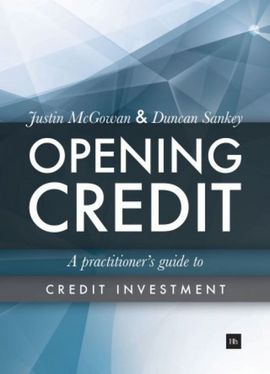
Synopsis
As a result of prevailing monetary conditions since the global financial crisis, the world has witnessed unprecedented growth in global corporate credit markets. Yet, despite the trillions of dollars put to work in the debt capital markets, corporate credit is still an unfamiliar concept to most investors compared to other asset classes, such as equities and commodities. Every red-top newspaper and 24-hour news service is happy to report the latest twitch in the Dow, FTSE or Stoxx indices but momentous moves in the iBoxx or iTraxx go unmentioned. And whereas many a talking head is happy to pose as an equity analyst, few feel comfortable venturing into the arcana of credit. Yet the corporate credit market, as the authors of this new book show, is both materially larger than its equity peer and has shown more attractive risk/ reward characteristics over the last 90-odd years.
In Opening Credit, career credit professionals, Justin McGowan and Duncan Sankey, aim to redress this by drawing on their more than 50 years' collective experience in the field to elucidate a practitioner's approach to corporate credit investment. Whilst explaining the basics of traditional credit analysis and affirming its value, McGowan and Sankey also caution against its shortcomings. They demonstrate the need both to penetrate the veil of accounting to get to the economic reality behind the annuals and interim numbers and to analyse the individuals that drive them – the key executives and board members. They employ a range of cogent and easy-to-follow case studies to illustrate the value of their executive- and governance-led approach, which places management front and centre in understanding corporate credit.
Opening Credit will appeal to all those seeking a better understanding of corporate credit, including analysts looking to develop their skills, fund managers (especially those with an eye to SRI), bankers, IFAs, financial journalists, academics and students of finance.
Details
Reviews
Andrew writes a love letter to copywriting. Not a how-to, but a how and why we write. For copywriters, it puts our sometimes inexplicable thoughts and behaviours around writing into wonderful words. For non-copywriters, it’s a beautiful account of the parts of the process you don’t see or understand. This is a book I’ll read again and again.Vikki Ross, Copy Chief
The book I wish I’d read when I was starting out as a copywriter, why is it so late?Sue Higgs, Group Creative Director
Copywriting is... wonderfully enigmatic, if this book is any indication. By drawing attention to the more intangible elements of our craft – with references ranging from Philip Larkin to Lethal Weapon – Andrew has put together a treatise quite unlike anything else out there. And perhaps unsurprisingly, it comes packaged in an effortlessly eloquent turn of phrase. I wish I’d written it.Ryan Wallman, Creative Director, Head of Copy & Author of Delusions of Brandeur
What to write about a book on copywriting? I read it (in one sitting). My mind wandered (a good thing according to the author). I learned two new words (eremitic and sesquipedalian). I searched up two of the sources (and plan to go back to the many useful-sounding ones). I think you should read this book (at least once a year, for the rest of your life).Diane Young, Co-founder & CEO of The Drum
